If you have a range hood with 400CFM+, do you have a make up air kit?
Jade BR
6 years ago
Featured Answer
Sort by:Oldest
Comments (8)
kristinw88
6 years agoJade BR
6 years agoRelated Discussions
pillog: what kind of hood and set-up do you have?
Comments (1)It doesn't matter, but I've been seeing a lot of "pillog" recently. Just to be informative, I'll tell you it's PLLLOG. 3 L's. If you want to change one into a vowel, I'm not offended, though one is rightly a numeral and there is no tittle. :) I spoke to your smoke question in the other thread just now. I'm not sure venting is going to help it. Yes, I do have a Gaggenau oven, and a 1200 cfm ModernAire hood. I tried oven-smoking a brisket once. The foil might not have been as tight as it should be since this was improvised, rather than in a smoker box, and no actual appreciable smoke came through, and I get more smell from baking, but I could tell that there were some toxins that the filters couldn't catch. Primo campfire headache, though I think running the hood helped a lot. That's the kind of thing an exterior venting oven would be good for, though it occurs to me that allowing some odor to be pumped into the house is probably a safety feature to remind people they have stuff in the oven before it catches fire if forgotten. I do get some baking odors, as I've said, but no clingy residue. Just scents that dissipate. People don't come over six hours later and say, "Oh, what's cooking?" When something pungent has been cooking for a long time, the smells, etc., really do build up in the oven and come tumbling out when you open the door. That's where I was saying my hood helps, even though it's off to the side and five feet away. It'll suck out the world, if you let it. It doesn't clear every little bit, but it helps. It even helps pull the onion fumes from the island four feet away, making it easier to chop. My biggest problem is that I don't need a lot of (loud!) fan for many things I cook, and usually turn it to low. When I'm searing meat on the stove (cooktop), I sometimes forget to put it on high, and too much escapes. That's user error, though. I'm surprised that the reviews for F&P are so bad. Rhome410 loved hers. There is the issue with the enamel in the self clean, which she had, but manually cleaning an enamelled oven just isn't that hard. The Gaggenau has the best pyrolysis ever which goes over 900 degrees. Which draws a lot of electricity, and warms the room (from the fans cooling the electronics). I only do it a few times per year. You have to clean off the loose stuff anyway. I was going to buy the Gaggenau oven based on using my mother's, so didn't research the filters much. Nice added bonus. If you think that it's something you need, however, it might be worth getting the F&P, if it has it and that part is known to work well, and just cleaning it manually. It's supposed to cook and bake well, which is the important thing! Cleaning hints: Trailrunner taught us a chemical reaction: If you have charred yuck stuck to an oven or pan, cover it with baking soda, lay a paper towel on it, dampen the towel thoroughly with boiling water and leave it overnight. If the char is very thick it might take two or three applications, but it'll come right up with no scrubbing. Acid is good for other kinds of crud, so warm a small dish of vinegar in the oven, so it gets all steamy, then get out of the way when you open it (try not to breathe the vinegar. Scrub down everything with a scrubby dampened in the vinegar. And, most of all, if you have a big oops, try to clean it up right after the meal, while it's still warm....See MoreMUA - Make up air for range hood
Comments (19)I think that the OP is on the right track. The make-up air should be as close to the appliance as reasonably possible. That is the way MUA should work for other combustion appliances like water heaters, furnaces, boilers and fireplaces. You don't want unnecessary air changes in the rest of the house or even in the rest of the kitchen just to remove smoke, combustion gas and aerosols from the cook surface. That is just wrong-minded. Opening a window or door is not acceptable because it is too dependent on which way the wind is blowing at that moment. In laboratory design, a number of years ago, the design of fume hoods took a major turn. They used to just suck ambient interior air, a lot of it, up the stack. 20-30 years ago, for a spell, they just started incorporating raw MUA into the hood design. When working in those wonders you are definitely aware of the outside weather because outside air is moving directly over the person working in front of the sash and everything in the hood was exposed to outdoor air conditions. It was a big energy savings, but not so good for the laboratory scientists and their work in some cases. Now there are other solutions. If you are having trouble envisioning what a fume hood looks like, just google it. You will get lots of hits. I sometimes wish I had one at home for cutting onions ;-) Rather than putting the MUA far away from the range it should be as close to the range as possible. The heck with MUA under the range. From my point of view, a lab guy, the most efficient way to build a MUA system would be for the range manufacturers to incorporate MUA into the range design like those now-outdated fume hoods. MUA should probably be supplied all the way around the perimeter of the horizontal surface. As a cook, I can say that I would not want it to be a simple opening around the range surface because that would be a maintenance nightmare. I expect that it might be best located somewhat lower than the horizontal surface in a way that it is easy to clean and does not get spilled into. A system like that would make for a comfortable cook and energy efficiency. The drawbacks of the now-outdated fume hood designs really would not apply to a range/hood system. In those, what you were working on could be very toxic and the process temperature-sensitive. In the case of a kitchen, the design can be a little more loose as far as allowing trace "fumes" from the stove to escape. What you are working on is not temperature-sensitive in the same way as a laboratory procedure....See MoreRange Hood and Make up air
Comments (6)My Pa 2009 codes required make up air for anything over 400 CFM. I am getting an American Range 36 inch and the manual doesn't give an exact requirement but I have installed a Zephyr monsoon DCBL it is 715 CFM I bought the Broan Make up air unit from amazon because I needed an 8"diameter vent duct for that Zephyr unit. The HVHC guys have it installed and everything works well. The MUA duct opens when an air finger trigger is activated in the range hood duct the make up air unit is connected via 12 volt wire. The duct pulls outside air into my air return vent prior to it going into the geothermal unit to be heated. Zephyr now makes their own MUA unit identical to the Broan. The inspector was of no help in choosing anything. The HVAC guys said just get a 300 CFM range hood. Knew about makeup air but had never installed. The Appliance saleperson gave me NO guidance. I got more info here on GW in the appliance forum. I basically had to wing it myself and tell the HVAC guys what to do. Wont know about inspections until Dec or so when we get our final. This is a major gray area in my locale. I am hoping I do not have to get an air heat exchanger to warm the air prior to it loading into the main air return. This is required with some HVAC units but may not be an issue with my geothermal. And that I am not under the newer 2012 codes. I love the Zephry. BTW - very quiet....See Morerange hood make-up air: thoughts on interesting white paper?
Comments (6)Since the structure isn't going to deflate and collapse when an exhaust system is running, the amount of air that goes out an exhaust system is limited to how much outside air comes in the structure at other places. A make up air system is a great approach. All houses need regular fresh air anyway, both purposes can be served. Older houses are usually not tight - think not only around windows and doors, but through the walls (electrical sockets and switches, pipe runs through walls and similar unsealed breaks in the wall, through the floor up from a crawl space or basement, unsealed areas around HVAC return or supply grill boots, etc.). Unless all of these have been sealed. It's not often done other than in extreme weather areas. In times of mild weather or otherwise, cracking a window to allow in fresh air helps an exhaust fan (whether for cooking or even in a bathroom) work better. Gas appliances if inside the structure should be in areas that are closed off from inside air so that backdrafting can't happen. In my house, I have two "closets" (one for a water heater, one for a furnace) that are within the exterior walls but both closets have outside air supplies and exhausts and the doorway edges are sealed tightly with raised threshholds and tight weatherstripping around the door frames. When gas appliances are in a basement, the best approach is to similarly close them in an airtight room or otherwise closed off with outside air supply for combustion....See MoreLaurie Pags
6 years agoAnon Username
6 years agoUser
6 years agoLaurie Pags
6 years ago
Related Stories
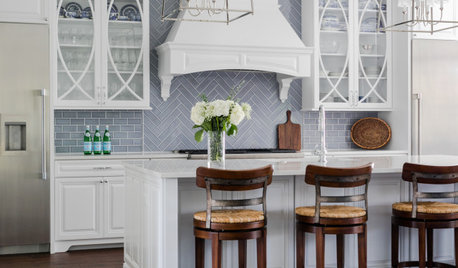
KITCHEN DESIGN10 Terrific New Ideas for Wrapped Range Hoods
See how designers use various materials and ornamentation to play up or play down a covered kitchen range hood
Full Story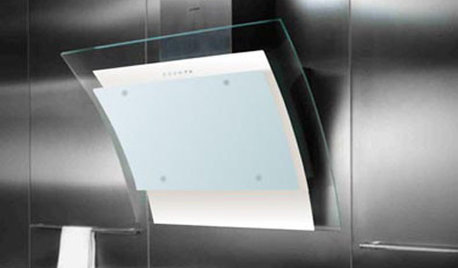
5 Stunning Modern Range Hoods
Today's kitchen range hoods can look like sleek sculptures. Here's what to look for when you go shopping for one
Full Story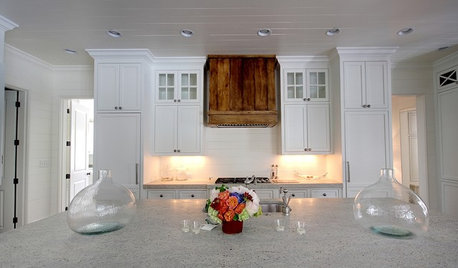
KITCHEN DESIGNWood Range Hoods Naturally Fit Kitchen Style
Bring warmth and beauty into the heart of your home with a range hood crafted from nature's bounty
Full Story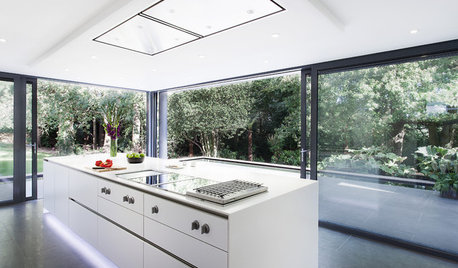
KITCHEN APPLIANCESDisappearing Range Hoods: A New Trend?
Concealed exhaust fans cut visual clutter in the kitchen
Full Story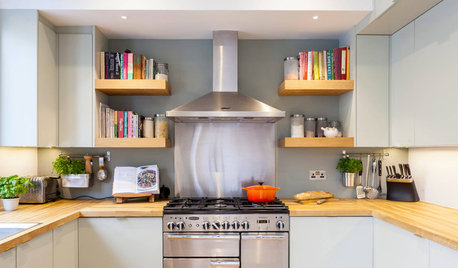
KITCHEN APPLIANCESWhat to Consider When Adding a Range Hood
Get to know the types, styles and why you may want to skip a hood altogether
Full Story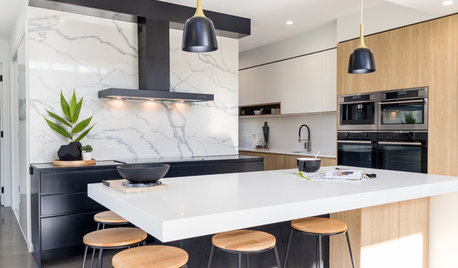
KITCHEN DESIGNHow to Get Your Range Hood Right
Get a handle on the technical specs, and then learn about fun design options for creating a beautiful kitchen feature
Full Story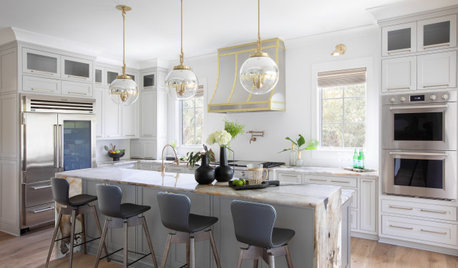
KITCHEN DESIGNDesigner Tips for Range Hoods, Appliances and Lighting
Learn how to get your microwave height just right, what kind of bar stool will be most comfortable and more
Full Story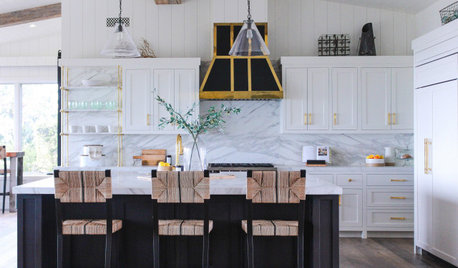
KITCHEN DESIGN15 Statement Range Hoods to Inspire Your Kitchen Remodel
See how 15 range hoods add personality and an intentionally designed look to their kitchens
Full Story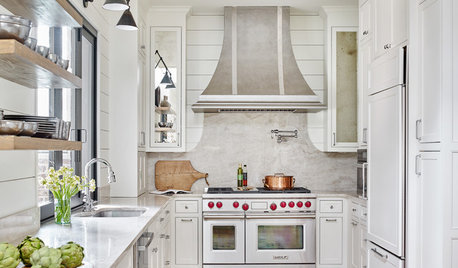
KITCHEN APPLIANCESHouzz Call: Show Us Your Creative Range Hood
Have you customized your kitchen’s range hood? Please tell us all about it
Full Story


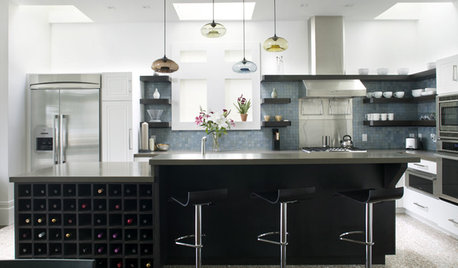
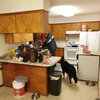
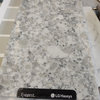

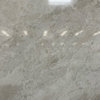
Jade BROriginal Author